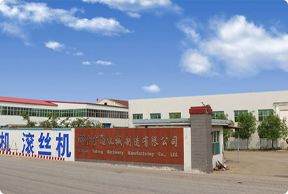
-
 Afrikaans
Afrikaans -
 Albanian
Albanian -
 Amharic
Amharic -
 Arabic
Arabic -
 Armenian
Armenian -
 Azerbaijani
Azerbaijani -
 Basque
Basque -
 Belarusian
Belarusian -
 Bengali
Bengali -
 Bosnian
Bosnian -
 Bulgarian
Bulgarian -
 Catalan
Catalan -
 Cebuano
Cebuano -
 Corsican
Corsican -
 Croatian
Croatian -
 Czech
Czech -
 Danish
Danish -
 Dutch
Dutch -
 English
English -
 Esperanto
Esperanto -
 Estonian
Estonian -
 Finnish
Finnish -
 French
French -
 Frisian
Frisian -
 Galician
Galician -
 Georgian
Georgian -
 German
German -
 Greek
Greek -
 Gujarati
Gujarati -
 Haitian Creole
Haitian Creole -
 hausa
hausa -
 hawaiian
hawaiian -
 Hebrew
Hebrew -
 Hindi
Hindi -
 Miao
Miao -
 Hungarian
Hungarian -
 Icelandic
Icelandic -
 igbo
igbo -
 Indonesian
Indonesian -
 irish
irish -
 Italian
Italian -
 Japanese
Japanese -
 Javanese
Javanese -
 Kannada
Kannada -
 kazakh
kazakh -
 Khmer
Khmer -
 Rwandese
Rwandese -
 Korean
Korean -
 Kurdish
Kurdish -
 Kyrgyz
Kyrgyz -
 Lao
Lao -
 Latin
Latin -
 Latvian
Latvian -
 Lithuanian
Lithuanian -
 Luxembourgish
Luxembourgish -
 Macedonian
Macedonian -
 Malgashi
Malgashi -
 Malay
Malay -
 Malayalam
Malayalam -
 Maltese
Maltese -
 Maori
Maori -
 Marathi
Marathi -
 Mongolian
Mongolian -
 Myanmar
Myanmar -
 Nepali
Nepali -
 Norwegian
Norwegian -
 Norwegian
Norwegian -
 Occitan
Occitan -
 Pashto
Pashto -
 Persian
Persian -
 Polish
Polish -
 Portuguese
Portuguese -
 Punjabi
Punjabi -
 Romanian
Romanian -
 Russian
Russian -
 Samoan
Samoan -
 Scottish Gaelic
Scottish Gaelic -
 Serbian
Serbian -
 Sesotho
Sesotho -
 Shona
Shona -
 Sindhi
Sindhi -
 Sinhala
Sinhala -
 Slovak
Slovak -
 Slovenian
Slovenian -
 Somali
Somali -
 Spanish
Spanish -
 Sundanese
Sundanese -
 Swahili
Swahili -
 Swedish
Swedish -
 Tagalog
Tagalog -
 Tajik
Tajik -
 Tamil
Tamil -
 Tatar
Tatar -
 Telugu
Telugu -
 Thai
Thai -
 Turkish
Turkish -
 Turkmen
Turkmen -
 Ukrainian
Ukrainian -
 Urdu
Urdu -
 Uighur
Uighur -
 Uzbek
Uzbek -
 Vietnamese
Vietnamese -
 Welsh
Welsh -
 Bantu
Bantu -
 Yiddish
Yiddish -
 Yoruba
Yoruba -
 Zulu
Zulu
best types of thread rolling machine
Best Types of Thread Rolling Machines
In the manufacturing industry, thread rolling machines are pivotal for producing high-quality threaded fasteners, screws, and various other components. Unlike traditional machining processes, thread rolling is a cold forging method that deforms the material to create threads, resulting in superior mechanical properties and improved fatigue resistance. When selecting the best type of thread rolling machine, various factors must be taken into account, including the type of threads needed, production volume, and material properties.
1. Horizontal Thread Rolling Machines
Horizontal thread rolling machines are among the most commonly used types in the industry. These machines utilize a horizontal configuration where the workpiece is fed between two cylindrical dies. As the dies roll against the material, the threads are progressively formed. Horizontal machines are especially beneficial for producing long parts, as they provide better support during the rolling process. These machines typically have a higher production capacity and can perform multiple thread sizes using interchangeable dies. They are ideal for large-scale production runs, making them a popular choice among manufacturers.
2. Vertical Thread Rolling Machines
Vertical thread rolling machines, on the other hand, operate on a vertical axis and are designed for smaller parts and intricate designs. These machines generally occupy less floor space and can be more affordable than their horizontal counterparts. The vertical configuration allows for ease of loading and unloading, which can enhance productivity in smaller manufacturing setups. Vertical machines are preferred for producing shorter threaded components, such as small screws and bolts. They are particularly advantageous when precision and detail are crucial, as they can accommodate intricate die molds that are essential for producing fine threads.
best types of thread rolling machine

3. Planetary Thread Rolling Machines
Planetary thread rolling machines are an advanced option that can produce multiple threads simultaneously. In these machines, the workpiece remains stationary while a set of rolling dies, arranged in a planetary configuration, rotate around it. This design allows for the efficient production of multiple threads in one cycle, thereby significantly increasing output. Planetary thread rolling is excellent for batch production of threaded fasteners, making it a preferred option in industries where high volume and uniformity are required. Although more expensive than horizontal and vertical machines, their efficiency justifies the investment in production-focused applications.
4. Combination Thread Rolling Machines
Combination thread rolling machines offer the flexibility of performing both external and internal rolling operations. These machines often come with interchangeable dies, allowing manufacturers to switch between various thread types without needing multiple setups. This versatility is ideal for businesses that produce a diverse range of products, as it minimizes downtime and maximizes production efficiency. Combination machines can be horizontal or vertical in design, providing manufacturers with the flexibility to choose the best fit for their specific production needs.
Conclusion
Selecting the best type of thread rolling machine ultimately depends on the specific requirements of your production processes. Horizontal machines typically excel in high-volume applications, while vertical machines are better suited for precision tasks with smaller components. Planetary machines stand out for their capability to increase output without compromising quality, making them ideal for high-demand environments. Finally, combination machines provide versatility for manufacturers looking to diversify their offerings. By understanding the strengths and applications of each machine type, businesses can make informed decisions that will significantly enhance their production efficiency and product quality. As technology continues to evolve, staying abreast of advancements in thread rolling machinery will be essential for maintaining competitiveness in the manufacturing industry.
